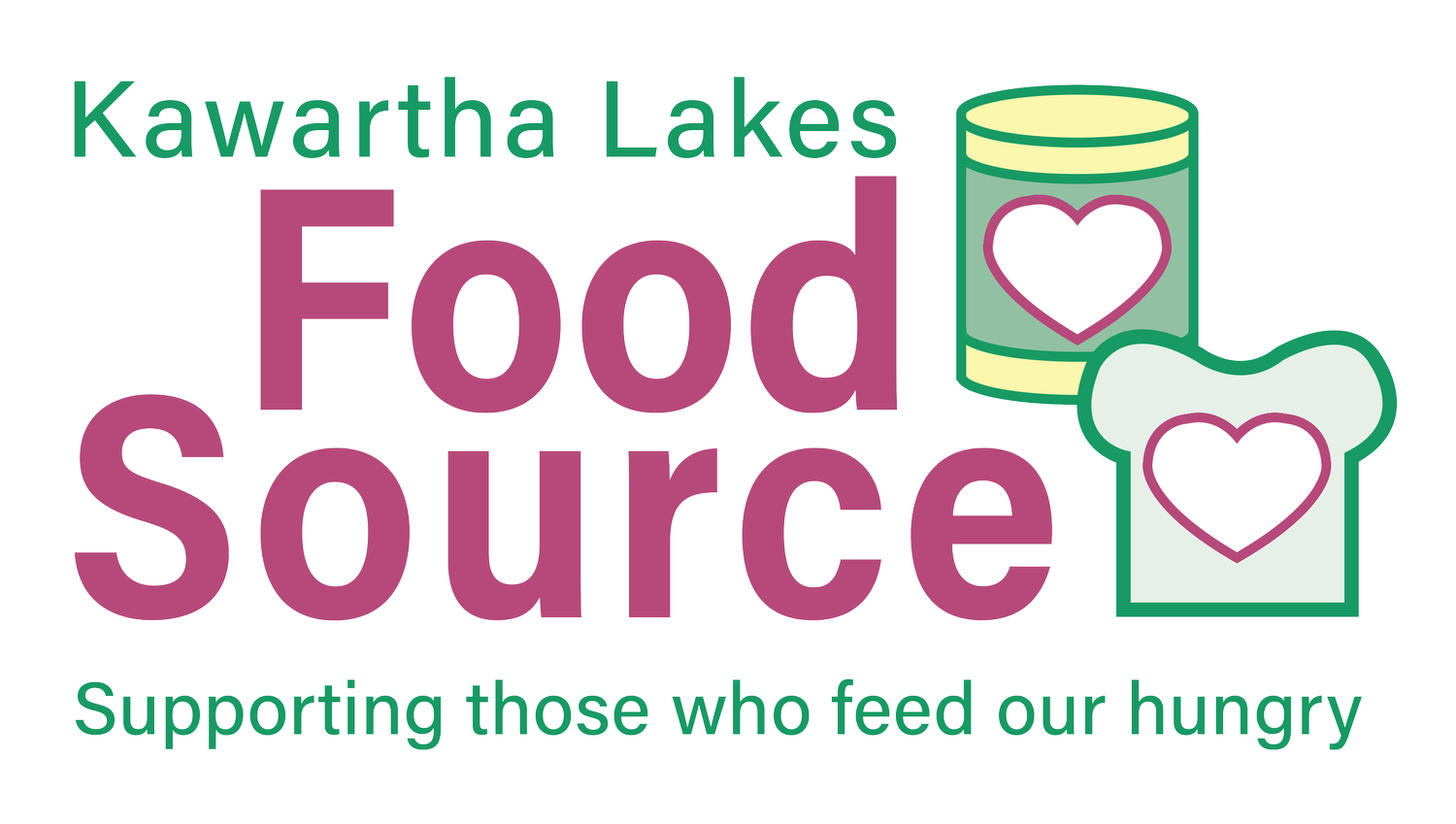2024 Pre-Budget Submission by KLFS
Our members include : 21 schools, 8 food banks, and 6 social service agencies.
Kawartha Lakes Food Source 2023 member food bank usage statistics[1]:
CKL Population: 79,247[2]
Total Visits to Member Food Banks: 13,670
Unique Individuals Served: 2,499
Households Served: 1,098
Adults Served: 1,707
Children Served (17 years and younger): 792
Kawartha Lakes Food Source has seen a 7% decline in food donations in the last year, coupled with a 10% increase in food bank visits. The most common reasons given for using our member food banks were inadequate social assistance rates and high costs of housing and food.
Recommendation 1: Provide adequate financial support for Ontarians.
We implore the Government of Ontario to increase provincial social assistance rates and reduce clawbacks on earned income and government benefits. In 2023, Kawartha Lakes Food Source recorded 565 households relying on social assistance programs or disability related benefits as their primary source of income, which accounts for over 50% of the total households served by our member food banks. Those depending on current Ontario Works and Ontario Disability Support Program rates live in poverty, significantly below the level needed for health and wellbeing.[3] It is imperative the Ontario Government aligns OW and ODSP rates with the cost of living and reduce the clawbacks on earned income and other benefits.
Recommendation 2: Increase access to affordable housing and improve tenant protections.
Kawartha Lakes Food Source sees the impact of the affordable housing crisis firsthand. The vast majority of households served by our member food banks live in private rentals, social housing, with friends or family, etc., with only 8% reporting to own their own home. Kawartha Lakes Food Source recommends investing in the costed plan of the Ontario Non-Profit Housing Association and Co-operative Housing Federation of Canada to build and extend the life of more affordable rental homes and apply more rent controls on new and existing units.[4]
Recommendation 3: Improve labour laws.
The changing labour market and barriers to unionization has increased precarious employment for Ontarians, requiring community support to feed families when workers slip back into poverty between employment opportunities. Improvements to labour laws and increased employments security can be made by classifying gig workers as employees so that they receive the same protections as other workers; reduce barriers to unionization to help low- and middle-income workers retain quality employment; and protect victims of wage theft.[5]
Recommendation 4: Reform Employment Insurance (EI) and implement automatic tax filing.
Despite most Ontario workers paying into EI, the program remains largely inaccessible due to challenging eligibility requirements. In 2023, our member food banks served only 19 households reporting EI as their primary source of income, while 565 households listed social assistance programs as their primary source of income. Reforming EI would reduce the strain on social assistance programs and help more individuals access better financial support, especially considering EI’s rates far exceed those of OW and ODSP[6]. Kawartha Lakes Food Source also recommends implementing an automatic tax filing to help struggling Ontarians receive the government benefits they are entitled to.
References
[1] Data presented is aggregated from our member food banks, as reported in Link2Feed. Link2Feed is a standardized software program used by all members of Food Banks Canada.
[2] Statistics Canada. (Accessed: 2024, January 31) Census Profile, 2021.
[3] King, Amanda and Quan, Ashley. (2021) Hunger Report, 2021. Feed Ontario. https://feedontario.ca/research/hunger-report-2021/
[4] Quan, Ashley. Hunger Report 2023. Feed Ontario. www.feedontario.ca/hunger-report-2023
[5] Ibid.
[6] Ibid.
